"Cherishing Little Steps - A Haven for Baby and Family Journeys"
Buying Baby Cribs
Are you eagerly anticipating the arrival of your little bundle of joy? As you prepare to welcome them into your home, one essential item you’ll need is a baby crib.
But with so many options available, how do you choose the right one for your precious baby? Don’t worry, we’ve got you covered.
In this article, we will guide you through the process of buying a baby crib, ensuring that you make an informed decision and create a safe and comfortable sleeping environment for your little one.
Key Takeaways
- Portable cribs are lightweight and easy to move around, making them suitable for frequent travelers.
- Convertible cribs can save money in the long run as they can be transformed into different bed types.
- Safety should be a top priority when buying a baby crib, look for cribs that meet safety standards and have certifications.
- Consider the size of the crib in relation to your available space and opt for durable materials such as solid wood or metal.
Different Types of Baby Cribs
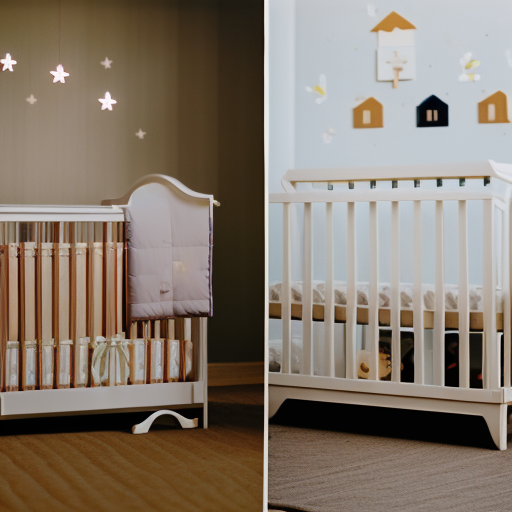
You should consider the various types of baby cribs available before making a decision. When it comes to choosing a crib for your little one, there are two main types that you should be aware of: portable cribs and convertible cribs.
Portable cribs are a great option if you need a crib that can easily be moved around. These cribs are lightweight and often come with wheels or foldable frames, allowing you to quickly set up or pack away the crib as needed. They are perfect for families who travel frequently or for those who have limited space in their homes.
On the other hand, convertible cribs offer long-term value as they can be transformed into different bed types as your child grows. These versatile cribs usually have adjustable mattress heights, allowing you to lower the mattress as your baby becomes more mobile. Some convertible cribs can even convert into toddler beds, daybeds, or full-size beds with additional conversion kits.
Both portable and convertible cribs have their own advantages and it ultimately depends on your specific needs and preferences. Consider factors such as mobility, space availability, and long-term use when deciding which type of crib is best for you and your baby.
Factors to Consider Before Buying a Baby Crib
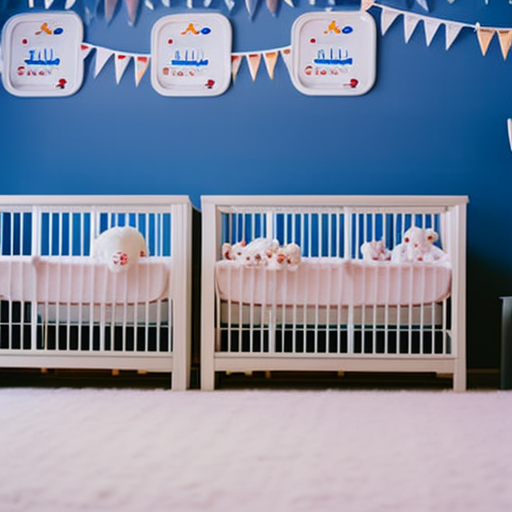
Before making a purchase, it’s important to consider factors such as safety and durability when looking for a crib. Choosing the right crib for your baby is crucial, as they will spend a significant amount of time sleeping in it. Here are some factors to consider before buying a baby crib:
-
Safety: Look for cribs that meet safety standards and have features like slat spacing that prevents your baby from getting stuck. Also, check for certifications like JPMA (Juvenile Products Manufacturers Association) to ensure the crib is safe.
-
Durability: A sturdy crib made from high-quality materials will last longer and withstand the test of time.
-
Size: Consider the size of the crib in relation to your available space. Measure your room beforehand to ensure it fits properly.
-
Convertibility: Some cribs can be converted into toddler beds or even full-size beds, which can save you money in the long run.
-
Style: Choose a crib that matches your nursery decor and personal style.
Considering these factors will help you make an informed decision when purchasing a baby crib. Keep in mind that there are pros and cons to different types of cribs, so weigh them carefully before making your final choice.
Safety Standards for Baby Cribs
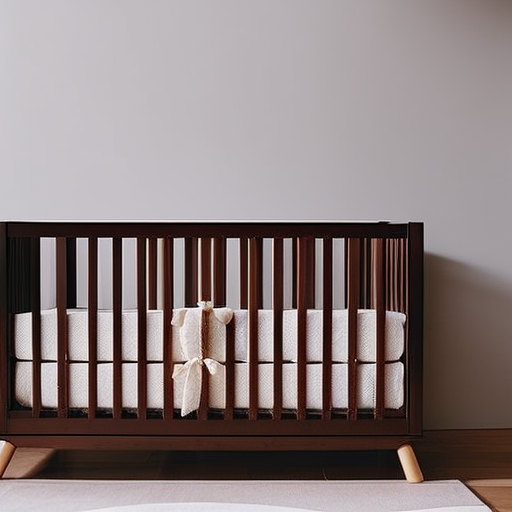
When considering a crib for your little one, it’s crucial to ensure that it meets the necessary safety standards. The safety of your baby should always be a top priority when choosing a crib.
One important aspect to consider is the baby crib mattress. It should fit snugly into the crib without any gaps or spaces around the edges. This helps prevent suffocation and entrapment hazards. Additionally, make sure the mattress is firm and fits securely in the frame to reduce the risk of Sudden Infant Death Syndrome (SIDS).
In addition to the mattress, there are other baby crib accessories that play a role in ensuring your baby’s safety. Look for cribs with adjustable mattress heights so you can lower it as your baby grows and becomes more mobile. This prevents them from climbing out and potentially injuring themselves. Also, check for sturdy construction and tight-fitting hardware to avoid any accidents caused by loose parts.
Remember, always follow manufacturer guidelines when assembling and using your baby’s crib. Regularly inspect it for any wear or damage, such as loose screws or broken slats, and promptly address these issues.
Choosing the Right Size of Baby Crib

The size of the crib you choose is an important factor to consider when creating a safe sleeping environment for your little one. A properly sized crib not only ensures comfort but also promotes safety.
Here are some key points to keep in mind when selecting the right size:
-
Spaciousness: Opt for a crib that offers ample space for your baby to move around comfortably, while still providing a cozy and secure sleeping area.
-
Mattress Fit: Ensure the crib mattress fits snugly within the crib frame, leaving no gaps between the mattress and the sides of the crib. This prevents any potential entrapment hazards.
-
Convertible Option: Consider investing in a convertible crib that grows with your child. These cribs can be transformed into toddler beds or daybeds, extending their usefulness beyond infancy.
-
Adjustable Mattress Heights: Look for cribs that allow you to adjust the mattress height as your baby grows. Starting with a higher level makes it easier to reach your newborn, while lowering it as they become more mobile helps prevent falls.
-
Room Size: Take into account the dimensions of your nursery when choosing a crib size. It should fit well within the available space without obstructing walkways or causing overcrowding.
By considering these factors and choosing an appropriate-sized baby crib, you can create a safe and comfortable sleeping environment for your little one.
Materials Used in Baby Cribs
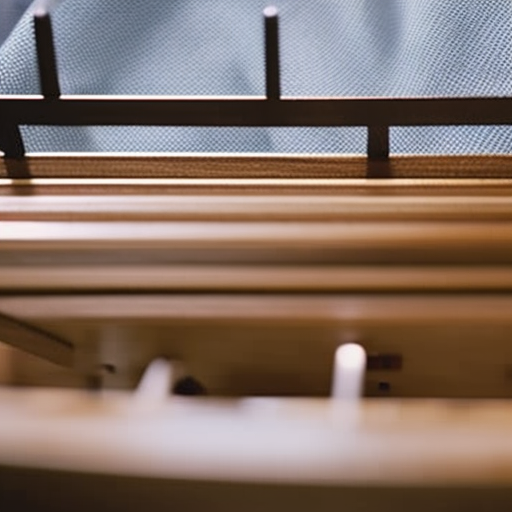
To ensure the safety and comfort of your little one, it’s important to consider the materials used in crib construction. When choosing a crib for your baby, you want to make sure that it is made from eco-friendly materials that are safe for your child and the environment.
One popular material used in cribs is solid wood. Solid wood cribs are sturdy and durable, providing a secure sleeping environment for your baby. Look for cribs made from sustainably sourced wood, such as bamboo or FSC-certified hardwoods, which are harvested responsibly.
Another popular option is metal cribs. Metal cribs are known for their strength and durability. They are also easy to clean and maintain. However, be cautious when selecting a metal crib as some may contain lead-based paint or other harmful substances.
Plastic cribs are another choice to consider. While they may not be as common as wooden or metal cribs, plastic cribs can be lightweight and easy to move around. Look for plastic cribs that are BPA-free and meet safety standards.
Features to Look for in a Baby Crib
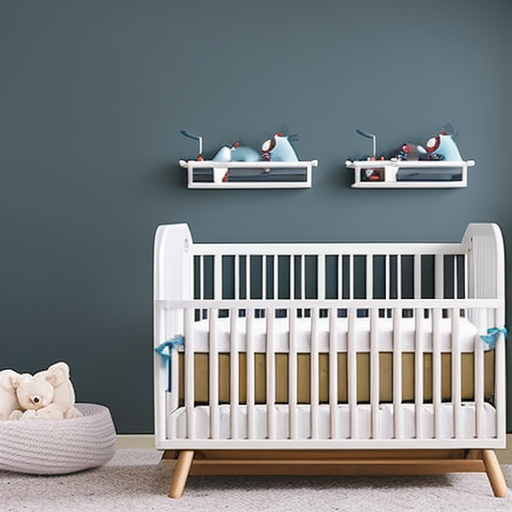
A key feature to consider in a crib is adjustable mattress height for added convenience. This allows you to easily lower the mattress as your baby grows, ensuring their safety and making it easier for you to lift them out of the crib.
But that’s not all! When looking for the perfect crib, here are some other features to keep in mind:
-
Convertible cribs: These versatile cribs can be transformed into different bed types as your child grows, such as toddler beds or full-size beds. It’s a cost-effective option that will grow with your little one.
-
Eco-friendly cribs: If you’re concerned about the environment, opt for cribs made from sustainable materials like bamboo or organic cotton. These cribs are not only better for the planet but also safer for your baby, as they are free from harmful chemicals.
-
Spacious storage: Look for cribs with built-in drawers or shelves underneath. This extra storage space will come in handy when organizing your baby’s essentials.
-
Teething rails: Babies love to chew on everything, including their crib rails. Look for cribs with teething rails to protect both your little one’s gums and the crib itself.
-
Easy assembly: Choose a crib that is easy to put together without requiring any special tools. This will save you time and frustration during setup.
Budget-Friendly Baby Cribs
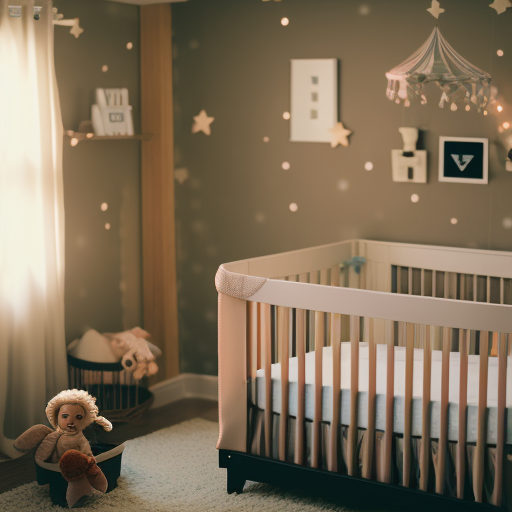
When looking for budget-friendly options, consider cribs that offer the same features as higher-priced ones. You don’t have to sacrifice quality or safety when trying to save money on a baby crib. There are plenty of affordable options available that still meet all the necessary standards.
One way to find budget-friendly baby cribs is by looking for sales and discounts. Many retailers offer promotions and deals throughout the year, allowing you to get a high-quality crib at a lower price. Additionally, consider buying second-hand cribs from trusted sources like friends or family members. Just make sure to check for any recalls or safety issues before making a purchase.
Another option is to choose eco-friendly choices. These cribs are not only good for the environment but can also be more cost-effective in the long run. Look for cribs made from sustainable materials like bamboo or organic cotton. These materials are durable and safe for your baby while being less harmful to the planet.
Tips for Buying a Secondhand Baby Crib

Make sure you thoroughly inspect any secondhand crib for safety issues before purchasing. When buying a secondhand baby crib, it’s important to prioritize the safety and well-being of your little one. Here are some tips to help you make an informed decision:
-
Check for sturdy construction: Look for a crib that has no loose or missing parts. Ensure that all screws and bolts are tightly secured.
-
Examine the mattress support: Make sure it is firm and not sagging. A sagging mattress can pose a suffocation risk.
-
Inspect the slats: The distance between slats should be no more than 2.38 inches apart to prevent your baby from getting stuck or slipping through.
-
Look out for recalls: Research if the crib model has been recalled due to safety concerns. This information can be found on websites like the Consumer Product Safety Commission (CPSC).
-
Avoid drop-side cribs: These have been banned in recent years due to numerous incidents of infants getting trapped or injured.
Buying a secondhand baby crib can save you money, but it’s crucial to take precautions and avoid common mistakes:
- Not checking if the crib meets current safety standards.
- Purchasing a crib with peeling paint or rough edges that could harm your baby.
- Failing to ensure that all hardware is included and in good condition.
- Neglecting to measure the space where the crib will be placed, resulting in size compatibility issues.
- Overlooking signs of wear and tear, such as cracks or splintered wood.
How to Set Up and Assemble a Baby Crib
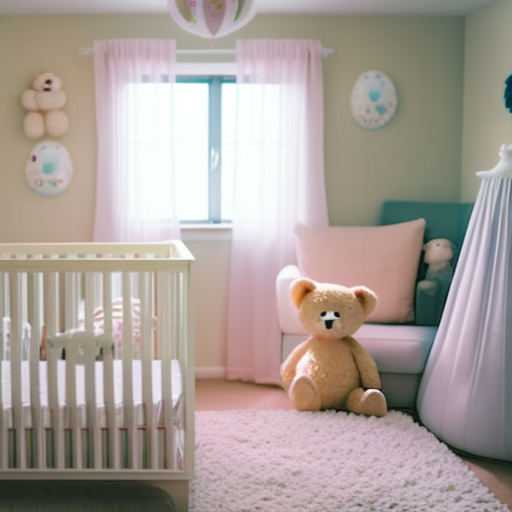
To set up and assemble your baby crib, start by carefully following the manufacturer’s instructions. Each crib may have specific steps and requirements, so it’s important to read and understand the instructions thoroughly.
As you prepare your baby’s sleeping space, there are a few key components to consider: the baby crib mattress and baby crib bedding.
The baby crib mattress is an essential part of ensuring a safe and comfortable sleep environment for your little one. Look for a firm mattress that fits snugly inside the crib with no gaps or spaces around the edges. This will help prevent suffocation or entrapment hazards.
When choosing baby crib bedding, prioritize safety over aesthetics. Opt for fitted sheets made from breathable materials like cotton. Avoid using loose blankets, pillows, or stuffed animals in the crib as they can increase the risk of Sudden Infant Death Syndrome (SIDS). Instead, consider using sleep sacks or wearable blankets to keep your baby warm without compromising their safety.
Remember that setting up and assembling a baby crib requires attention to detail and adherence to safety guidelines. By carefully following the manufacturer’s instructions and selecting appropriate bedding options, you can create a secure and cozy sleeping environment for your precious little one.
Maintaining and Cleaning a Baby Crib
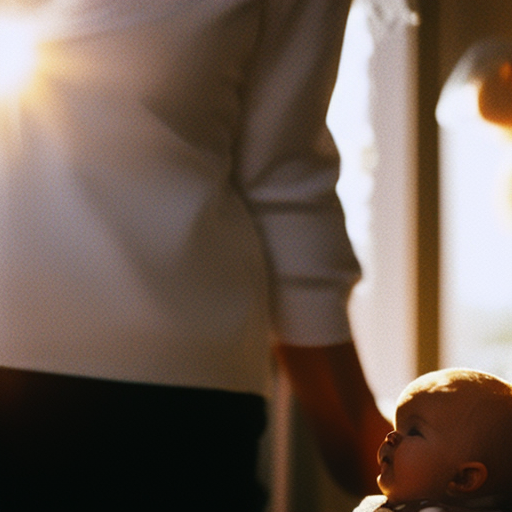
Now that you’ve learned how to set up and assemble your baby crib, it’s important to know how to maintain and clean it properly.
By taking good care of your crib, you can ensure a safe and hygienic environment for your little one. Here are some tips on maintaining a clean crib and preventing crib accidents:
- Regularly inspect the crib for any loose or broken parts, such as screws or slats.
- Keep the mattress clean by using a waterproof cover and regularly washing the sheets.
- Wipe down the crib with a damp cloth and mild detergent to remove any dirt or stains.
- Avoid using harsh chemicals or abrasive cleaners that could damage the crib’s finish.
- Remove any toys or objects from the crib that could pose a choking hazard.
By following these simple steps, you can keep your baby’s sleeping space clean and safe.
Frequently Asked Questions
Can I Use a Baby Crib as a Toddler Bed?
Yes, you can use a baby crib as a toddler bed. It is important to ensure the safety of your child during this transition. Follow guidelines and make necessary adjustments for a smooth transition.
What Is the Weight Limit for a Baby Crib?
When it comes to baby crib safety, choosing the right crib is crucial. Now, let’s address your current question: What is the weight limit for a baby crib?
Are There Any Regulations Regarding Crib Mattress Thickness?
When it comes to crib mattress safety, it’s important to consider the recommended crib mattress thickness. Regulations exist to ensure that the mattress is neither too thin nor too thick for your baby’s safety and comfort.
Can I Use a Crib Made of Metal Instead of Wood?
You can use a crib made of metal instead of wood. Metal cribs have their pros and cons, just like wood cribs. Consider factors such as durability, style, and safety regulations when making your decision.
How Often Should I Check the Crib for Loose Screws or Other Potential Hazards?
To ensure your baby’s safety, it’s crucial to regularly check the crib for potential hazards like loose screws. Make inspections a routine part of caring for your little one.
Conclusion
In conclusion, buying a baby crib is an important decision that requires careful consideration. By understanding the different types of cribs available and considering factors such as safety standards and size, you can make an informed choice.
Additionally, knowing the materials used in cribs and finding budget-friendly options can help you stay within your means. If purchasing a secondhand crib, be sure to follow tips for ensuring its safety.
Finally, setting up and maintaining the crib properly will ensure a safe sleeping environment for your little one. Remember, their well-being is our top priority!


